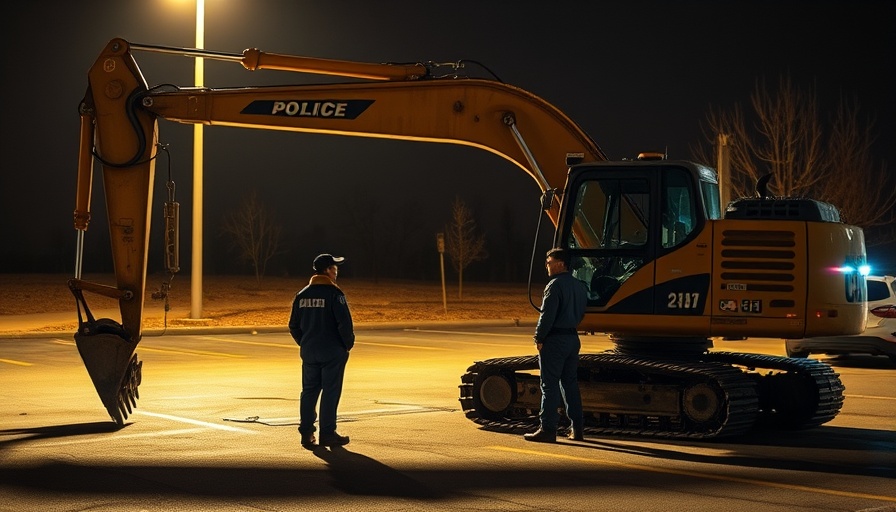
Excavators and Crime: An Unusual Intersection
A recent incident in DeFuniak Springs, Florida, has highlighted a peculiar trend in construction equipment theft. A Florida man was arrested for attempting to steal an ATM using a stolen excavator parked right next to a police station. This audacious act showcases not only the desperation of the individual involved but also the ongoing challenges surrounding construction equipment security.
As noted by the local police, this wasn’t an isolated case. Such thefts have been gaining attention across Florida and the entire nation, suggesting a broader problem that affects not just the construction industry but also property developers and facility managers who depend on secure equipment.
Understanding the Motivation Behind Equipment Theft
What drives individuals to commit such reckless criminal acts? In this case, the suspect reportedly stated he’d "rather rob a bank than work for my brother," indicating a personal motive intertwined with the crime. This statement reflects a mindset where the allure of quick cash via crime overshadows the long-term consequences of such actions.
For property developers and facility managers, understanding these motives can help cultivate better risk management strategies. Individuals breaking the law out of desperation often target easily accessible assets, such as construction equipment, that can be converted to cash in various manners.
Security Measures for Construction Equipment
In light of this incident, it’s crucial for business owners and property developers to take proactive measures to safeguard their assets. Experts from law enforcement suggest several best practices, including:
- Investing in GPS Tracking: Installing GPS devices on equipment can provide real-time location tracking, making retrieval easier in the event of theft.
- Physical Security Enhancements: Utilizing fences, lights, and CCTV surveillance around job sites can deter potential thieves.
- Regular Inventory Checks: Conducting frequent audits of equipment can help businesses identify missing items quickly.
Broader Implications of Equipment Theft
This incident is more than just a local curiosity; it mirrors a troubling trend affecting both small contractors and larger construction firms. According to recent data, the National Equipment Register states that theft costs the construction industry billions annually. The loss of construction equipment can lead to delays in projects, an increase in costs, and ultimately, a loss of client trust.
Furthermore, equipment theft has started to intersect with organized crime, as individuals learn to rebrand stolen machinery and sell it throughout different markets. This highlights the necessity for industry leaders to collaborate with local law enforcement to combat this rising tide of crime.
Consider this a Wake-Up Call
The attempt made in DeFuniak Springs serves as a challenging reminder for stakeholders within the construction sector. Just as technology is evolving, so too are the methods criminals use to exploit vulnerabilities. From the safety of your construction site to community development initiatives, vigilance is necessary to protect business interests and ensure the integrity of operations.
In light of these developments, business owners must not only invest in technological advancements, such as Building Information Modeling (BIM), but also prioritize the security measures that protect their investments. By combining innovative technology with robust safety protocols, businesses can create safer environments for their operations, ensuring their future sustainability.
Take Action Today!
Given the rising incidents of theft, it’s essential for contractors and property developers to reassess their security strategies. Implementing the above suggestions now can help mitigate risks and safeguard your assets for tomorrow. Don't wait until it's too late!
 Add Row
Add Row  Add
Add 




 Add Row
Add Row  Add
Add 

Write A Comment